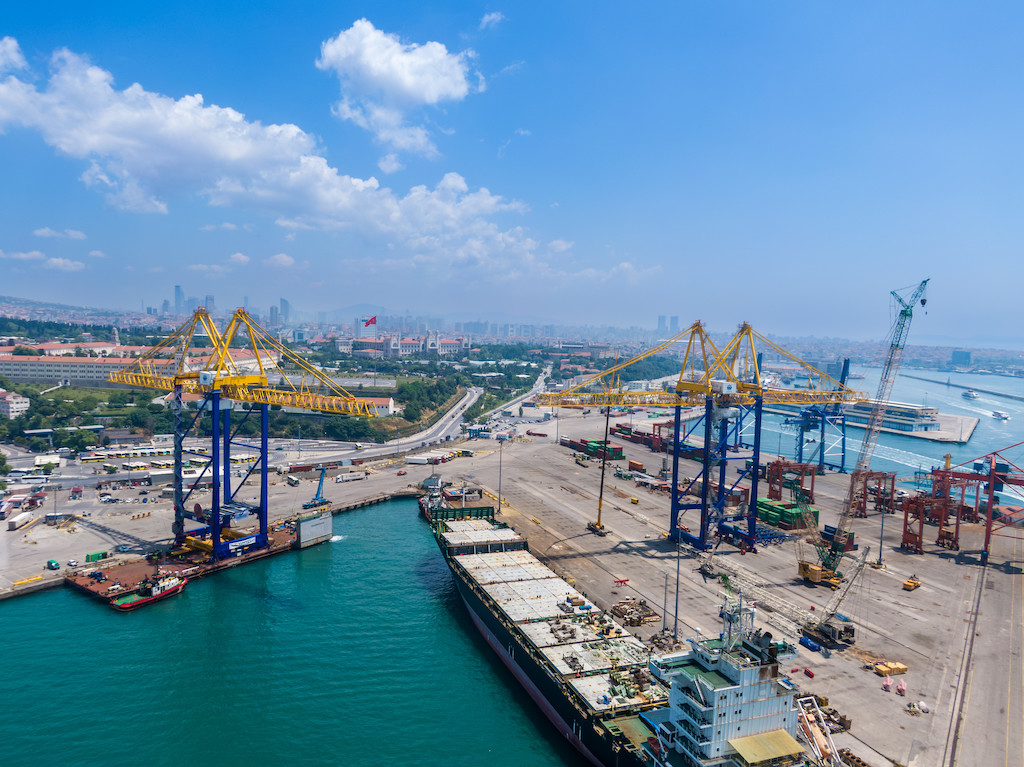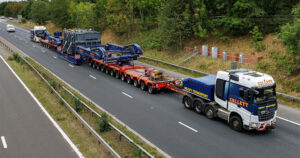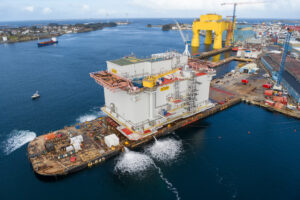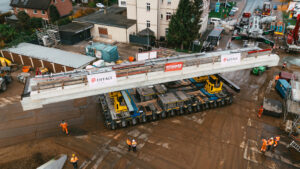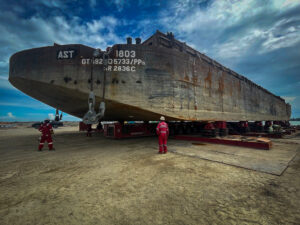Hareket successfully transported three colossal STS Cranes, each weighing 2,150 tons, from Haydarpaşa Port to Mardaş Port via the challenging waters of the Bosphorus Strait. These mammoth cranes, towering at 90 meters in height and spanning 25 meters in width, were transported with meticulous precision between two booms spanning a width of 150 meters – a feat achieved entirely by Hareket.
The journey began with the arrival of crane components from Ireland to Haydarpaşa Port by ship. Hareket’s expertise came into play as they meticulously executed unloading based on a carefully crafted layout plan. Subsequently, two high-capacity crawler cranes, with the heaviest part weighing 250 tons, were employed to install the cranes.
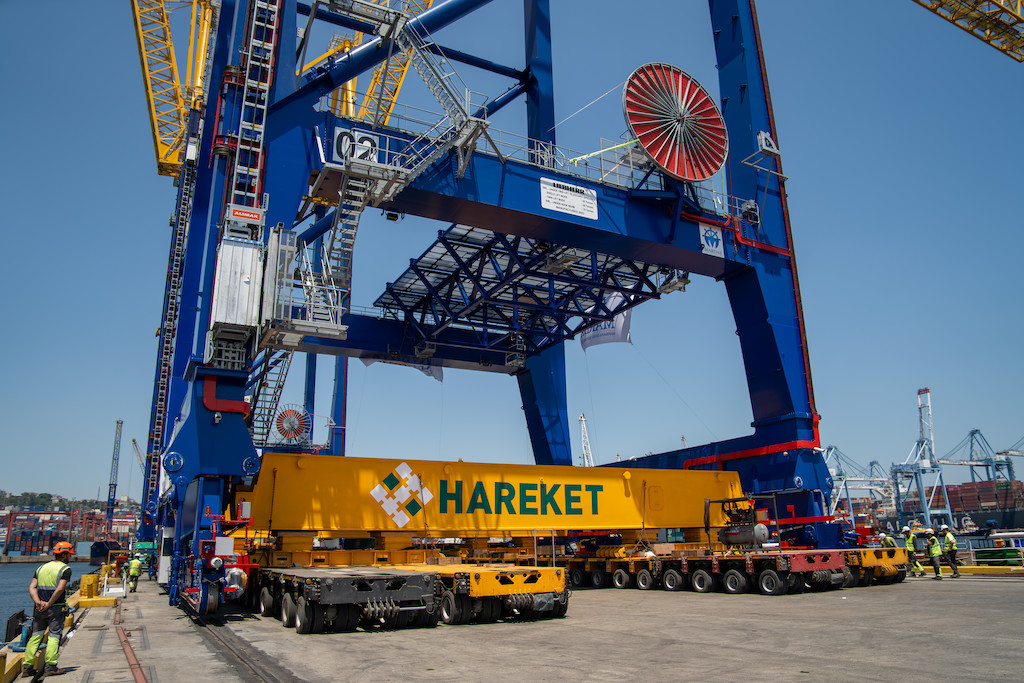
The enormity of the STS Cranes presented several challenges, including their substantial weight and width, towering height, and the unique constraints of the unloading port. Additionally, the varying dock heights at the two ports further complicated the operation. However, Hareket’s engineering team rose to the occasion, planning and executing every aspect of the project with precision.
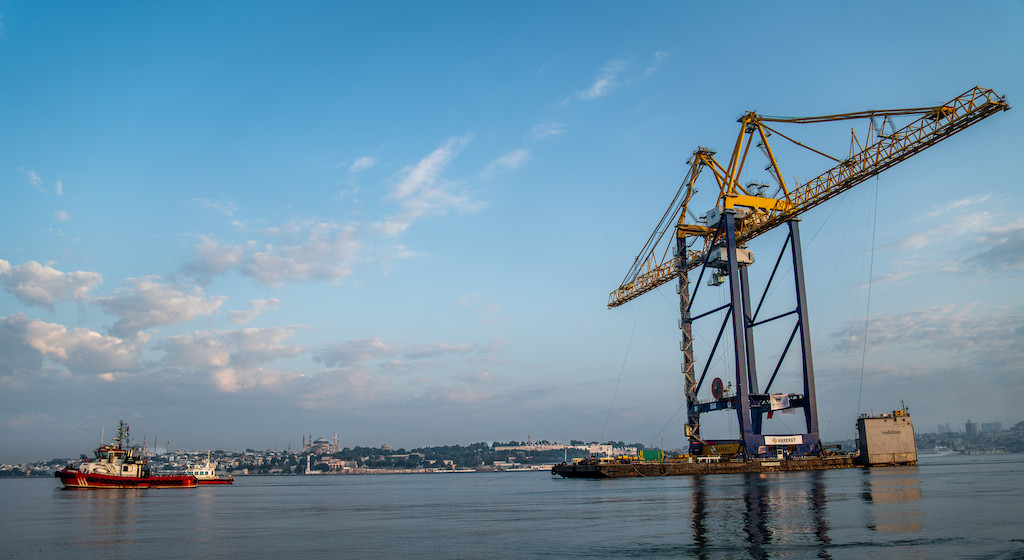
One of the standout features of this project was the load in and load out operation, a rare accomplishment on a global scale. Given the different port heights – 2.20 meters in Haydarpaşa Port and 3.60 meters in Mardaş Port – Hareket’s engineers determined that it was safer to perform load in and load out operations by landing and disembarking from the side. The result of this meticulous planning and execution was the successful delivery of three STS Cranes – the world’s first and only double boom cranes – to Mardaş Port with zero defects.
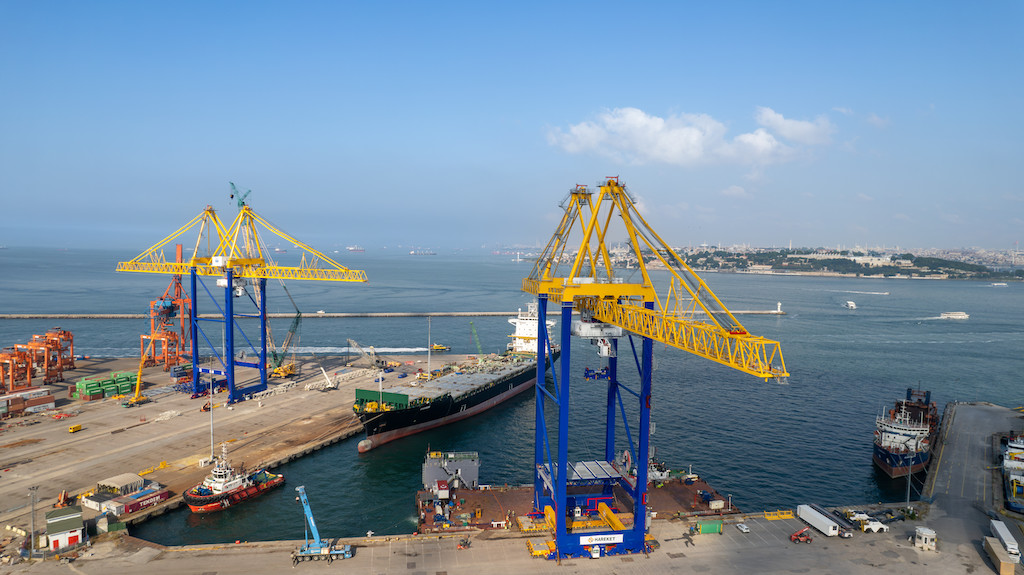
During the sea transportation phase of the project, Hareket worked closely with the Port Authority and Coastal Safety to temporarily close the strait crossings to traffic for five hours each time, ensuring the safe transit of all three STS Cranes.
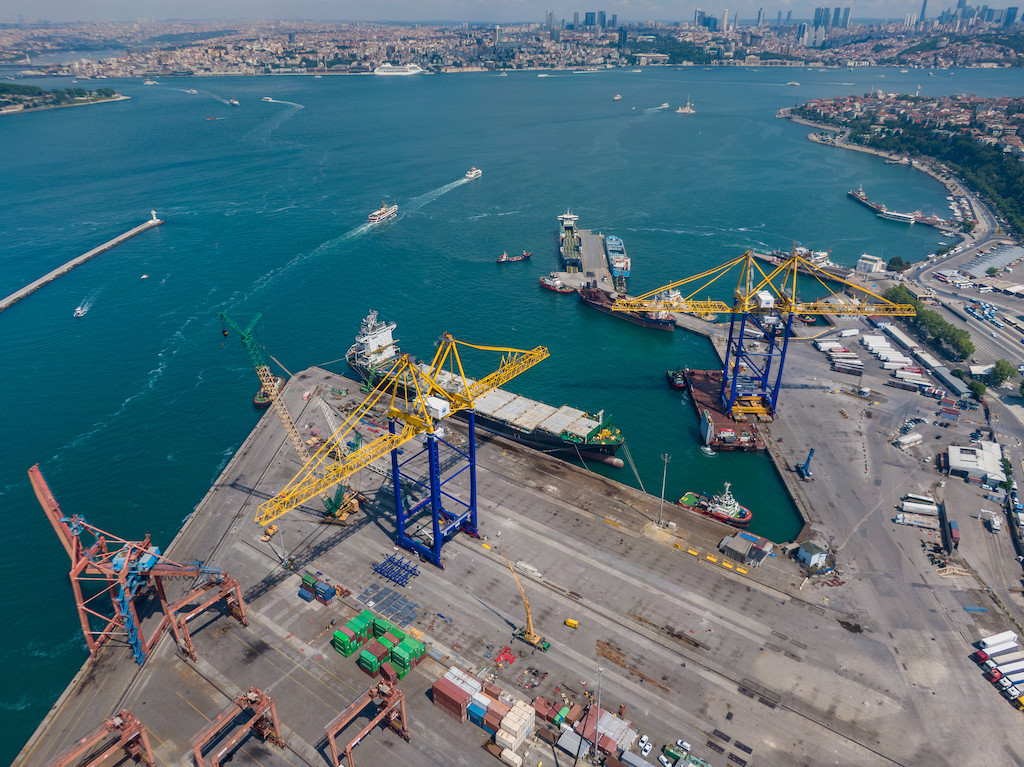
This turnkey project involved a total of 97 personnel, including a 12-person engineer team, a 10-person crane team, a 45-person crane team, and a 30-person heavy transportation, ballast, and lashing team, all working in perfect harmony to achieve this accomplishment.


